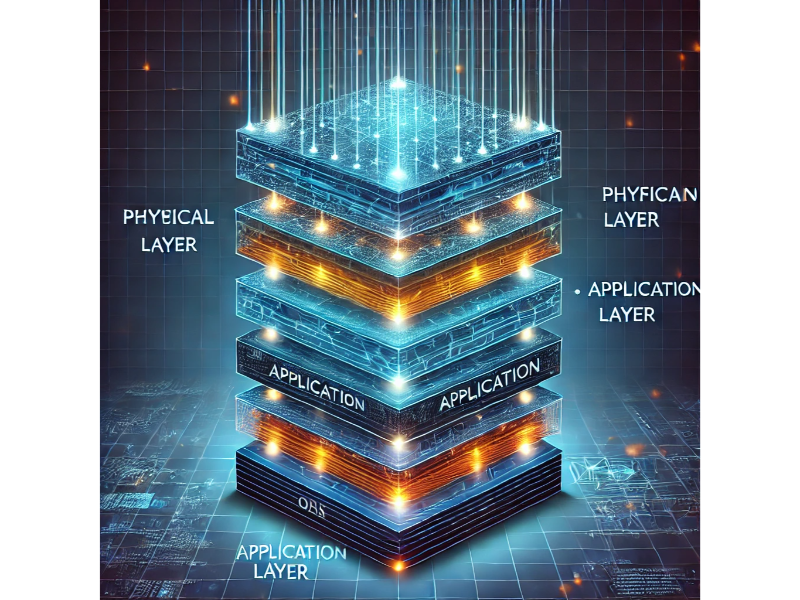- Network protocols are essential rules and conventions that enable communication between devices on a network.
- They ensure data is transmitted accurately, securely, and reliably across different systems.
A network protocol is a standardized set of rules and conventions that dictate how data is transmitted, received, and interpreted across devices in a network. These protocols ensure seamless communication between devices, regardless of their underlying hardware or software. Without network protocols, our interconnected digital world, including the internet, would simply not exist.
For example, when you send an email or browse a website, network protocols work behind the scenes to ensure your device communicates effectively with remote servers. From defining the structure of data packets to managing error handling and encryption, network protocols are at the heart of modern communication systems.

Categories of network protocols
Network protocols can be categorized based on their specific functions or the OSI (Open Systems Interconnection) model layer they operate in. Below are the key categories:
1. Communication protocols
These protocols focus on enabling data exchange between devices, ensuring reliable and efficient communication. Examples include:
- HTTP/HTTPS: Used for accessing web pages. HTTPS adds encryption for secure communication.
- FTP: Enables file transfer between devices on a network.
- SMTP/IMAP/POP3: Handle email transmission and retrieval.
Also read: Demystifying network protocols: rules for data communication
2. Network management protocols
These protocols monitor and manage the health and performance of a network:
- SNMP (Simple Network Management Protocol): Provides tools for monitoring network devices like routers and switches.
- ICMP (Internet Control Message Protocol): A diagnostic protocol often used for ping tests and error reporting.
3. Security protocols
Security protocols are essential for protecting data and maintaining privacy:
- SSL/TLS: Secure data transmission by encrypting communication.
- IPSec: Adds encryption and authentication to IP-based communications.
The role of network protocols
Network protocols are fundamental for facilitating digital communication. Here’s why they’re so important:
- Device interoperability: Protocols enable devices with different hardware and operating systems to communicate seamlessly.
- Error detection and recovery: They define mechanisms to identify, report, and recover from errors during data transmission.
- Secure communication: Encryption protocols like TLS ensure data integrity and prevent unauthorized access.
- Standardization: Protocols set universal rules, ensuring compatibility across devices and systems.
Without network protocols, the modern internet would collapse under the weight of its own complexity.
John Smith, Network Architect
Also read: Network protocols: Backbone of modern communication
Key examples of network protocols
1. TCP/IP (Transmission Control Protocol/Internet Protocol)
TCP/IP is the backbone of the internet. TCP ensures data packets are delivered in the correct order, while IP handles the routing of packets across networks. Together, they create the foundation for nearly all internet communication.
2. DNS (Domain Name System)
DNS translates human-readable domain names like “example.com” into IP addresses, making it easier for users to access websites without remembering numerical addresses.
Also read: Is DNS a network protocol? Understanding its role and function
3. HTTP/HTTPS
HTTP is the protocol that facilitates data exchange on the web, while HTTPS ensures secure communication by encrypting the data using SSL/TLS.
4. UDP (User Datagram Protocol)
UDP is a lightweight protocol that prioritizes speed over reliability. It’s widely used in applications like live video streaming and online gaming, where occasional data loss is tolerable.
How network protocols work
Network protocols operate through a layered system, most commonly represented by the OSI model. Each layer is responsible for a specific function:
- Physical layer: Governs hardware-level communication, including cables and signal transmission.
- Data link layer: Ensures error-free data transfer between directly connected devices.
- Network layer: Manages routing and addressing for data packets across networks.
- Transport layer: Handles reliable delivery and error correction for end-to-end communication.
- Session layer: Establishes and maintains communication sessions between devices.
- Presentation layer: Ensures data is formatted correctly for the receiving device.
- Application layer: Interfaces directly with user applications like web browsers and email clients.
Each layer depends on the one below it, creating a seamless communication process from physical transmission to user interaction.

Also read: What are the layers and layered models of network protocols?
Challenges in network protocols
Although network protocols are essential, they face significant challenges, especially as technology evolves:
1. Scalability
With the increasing number of devices connected to the internet, protocols must adapt to handle higher traffic loads without degrading performance.
2. Security
Cyber threats continue to evolve, requiring constant updates to security protocols to protect against data breaches, malware, and unauthorized access.
3. Compatibility
Ensuring that new devices and systems remain compatible with existing protocols can be difficult, particularly as standards change.
As networks grow more complex, protocols must evolve to remain efficient, scalable, and secure.
Jane Doe, Cybersecurity Expert
Also read: Understanding networking protocols: Evolution and importance
The future of network protocols
The rapid development of new technologies is reshaping the role of network protocols. Emerging trends like IoT (Internet of Things), 5G, and blockchain require more advanced, scalable, and secure protocols.
1. IoT protocols
IoT devices often use lightweight protocols like MQTT (Message Queuing Telemetry Transport) for efficient data transfer.
2. 5G and beyond
Faster and more reliable protocols are needed to support 5G’s promise of ultra-low latency and high-speed connectivity.
3. QUIC protocol
Developed by Google, QUIC is a modern protocol designed to replace TCP. It improves performance by reducing connection setup times and enhancing security.
As these technologies become mainstream, network protocols will continue to evolve, ensuring they meet the demands of speed, security, and interoperability.

Network protocols are the foundation of digital communication. They ensure that devices can connect, share information, and maintain secure and reliable interactions. From web browsing using HTTP/HTTPS to email communication through SMTP, these protocols are integral to our daily digital lives.
As technology continues to evolve, network protocols must adapt to meet new challenges and opportunities. Understanding how these protocols work and their role in shaping modern communication systems is essential for navigating the increasingly interconnected world.
A network protocol is a set of rules that allows devices to communicate effectively by defining how data is sent, received, and interpreted across networks.
Protocols like TCP include mechanisms for error detection and correction, ensuring data packets are delivered accurately.
TCP ensures reliable data delivery by verifying packet order and re-transmitting lost packets, while UDP prioritizes speed over reliability.
HTTPS encrypts data transmitted between your browser and a website, protecting sensitive information like login credentials and payment details.
IoT devices often use lightweight protocols like MQTT, which enable efficient data exchange even in resource-constrained environments.

